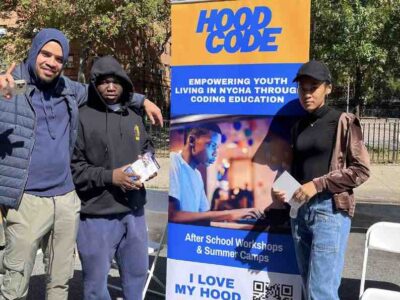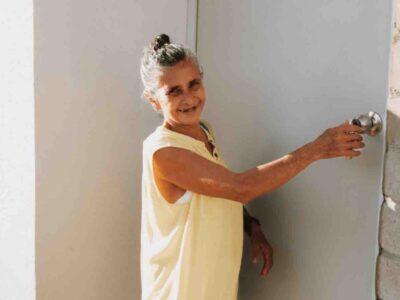(Bloomberg) —
In October 2020, the Andrew W. Mellon Foundation launched the Monuments Project, an initiative that promised to hand out $250 million to fund new monuments and memorials across the US. This week, the foundation announced that it would double that figure, giving the Monuments Project a total grant fund of $500 million.
It’s an unprecedented investment in public art, one that emerged amid a wave of social justice protests that often focused on Confederate memorials and monuments that were installed in US cities, mostly during the Jim Crow and Civil Rights Movement eras of the 20th century. So far, the the foundation has granted $173 million to fund 80 projects, among them an audit of existing monuments as well as new markers to overlooked histories. Newly funded monuments are in the works in Alaska, Hawaii, Mississippi, Texas, Virginia and other states.
Mellon Foundation president Elizabeth Alexander — who is also a renowned poet and Yale University scholar — says that this work is only just beginning. She spoke with Bloomberg CityLab about how Lost Cause memorials work as active symbols for systemic racism, why mapping monuments is so important, and how to build beauty within bureaucracy. This interview has been condensed and edited.
When did the Mellon Foundation decide on monuments?
That was an idea that I had in the process of considering the job. If you look back to my long history as someone in African-American studies, who from that had a very keen understanding that there are many stories that are have not been told, I’ve thought that for the longest time. In that beautiful phrase: The lions are only the victors when the lions tell history.
In the case of Confederate [monuments] in particular, what are all these stories that are so disproportionately told in our public spaces? Are they giving us history or propaganda? These Confederate monuments — do we realize that some of them are up in places where the Civil War wasn’t even fought? They present people as victorious who were commonly understood after that war to be traitors to the United States. And most importantly, so many of those statues were put up well into the next century. They are not a product of the immediate aftermath of the Civil War, but rather are a product of an ongoing desire to propagate ideas of white supremacy.
That kind of understanding is something that I brought to the table. I wanted us to think about public spaces. I wanted us to think beyond institutions like universities, where you apply to become a student to enter that community. Or a museum, or another kind of cultural organization where you might have to pay admission to go inside. I think the unbelievable power of that which we encounter in public space and its opportunity to teach, to inspire, and to embody the multiplicity of who we are seemed tremendously exciting to me.
It sounds like you are saying that this mission is rooted in a form of critique. Is that fair to say?
I wouldn’t characterize this just as critique. There’s nothing wrong with critique. Our primary energy is to help edify, to tell the many stories which have not been told in our public spaces. One of our first grants was to the Philadelphia-based Monument Lab, to find out who was represented in what spaces — what percentage of women, for example, are represented in public spaces. There was no one database where we could go to get that information. So we needed the research. This would be the monuments audit that told us not only what’s out there, but that would help us analyze what stories aren’t out there.
Also, it’s important to say that Mellon doesn’t say, “Here, you shall put up a statue of Harriet Tubman.” We fund projects that come to us from communities and entities who are doing the work. We are funders. We’re not the people out here in a directive sense, saying what should be out there.
Mellon has now committed $500 million. How did you come to that number?
We have an endowment. We have resources. We are always looking at what we have and how we can strategically spend it in order to make something discernible happen. One of the challenges of philanthropy is that people are doing so much beautiful work in the areas that we fund — arts and culture, humanities, higher education, libraries, archives, humanities in place. But the choices that we make have to be strategic choices, tethered to a powerful idea that we think we can move forward with a certain amount of money in a certain amount of time. It’s our work; it’s what we do.
Given that you are dealing with big states and small ones, urban communities and rural areas, and just the sheer geography of the country, how do you organize a project like this?
You can’t wave a magic wand and say, “We don’t have a project in South Carolina. We don’t have a project in Montana. So what’s the project?” What it takes for a community to be able to come together around a monuments project is complicated. It’s going to take some time to be able to fill all the way out. When we started the project, I said, I want a map with light-up dots. Every time there’s a new project, you see a new dot on the map.
Do you have such a map?
Our map doesn’t light up, but yes we do, so we can track our work. What you see is that some projects just take time and ripening.
I think of the project of the of the Kaw people. Their monument, their 25-ton sacred rock, was taken by white settlers 75 years ago and literally moved out of the ground, if you can imagine, to Lawrence, Kansas, where the settlers captioned it “Our Settler History.” But what’s powerful, and why I give this example, is the people of Lawrence, Kansas, people at the university, the Native community all came together, and they did before they ever talked to us. They did restitution work. And the people of Lawrence said: We want to make it right. We want to set the story straight. We want to right a historical wrong.
That’s where we came in. It costs a whole lot of money to move a 25-ton sacred mount and to put it back to to its rightful place.
Has any of the work drawn negative feedback? What has that looked like?
For the most part, no. And this is real talk, I can’t imagine that there would be, for the following reasons. What we have heard overwhelmingly is so much excitement for the power of the idea of looking at monuments writ large. The process of communities working together is so deep and powerful, and hard sometimes, but transformational. That’s less about Mellon and more about the work: We create a big umbrella idea, but then the work is done by the people who have the projects.
That said, there are definitely people who have very strong feelings about Confederate monuments. And when Confederate monuments are replaced with other things, or when they are recontextualized so that other stories are told around them, there are many people who cling to and care about those monuments — which is to say, holding on to a certain idea of who is American, who counts, whose history is important, and values that unfortunately some still hold on to.
But the overwhelming, vast, huge majority — we see it on the ground. We hear it from our grantees. We see it in communities. We see it in a city like Chicago, where we made a very large grant for a number of different projects that are telling something like seven different stories of people and experiences in that incredibly complicated, beautiful, boisterous city. When we made that grant, the mayor of the city talked about what they’re able to do with these resources to tell more of the richness of Chicago’s many stories.
Chicago is a great example. One story that caught my eye is the memorial for the victims of Jon Burge. He was a Chicago Police Department commander convicted of torturing more than 100 people in police custody in the 1970s and ’80s. Given that policing is such a controversial topic in Chicago, I could see how that could be a divisive monument. Does that come up as an issue for Mellon, when a grantee wants to do something that could be seen as divisive?
How do you define the divisiveness? That’s a real question that I’m asking you. Who is divided from whom with that monument?
Well, there was another police scandal only a few years back about the Chicago Police Department conducting off-the-books interrogations at a facility called Homan Square. That scandal led former Mayor Rahm Emanuel to pay reparations to Burge’s victims. Mayor Emanuel criticized the police union for defending Burge in 2018. I don’t know, I’m not in Chicago, but when I see a monument that is about police and is not a statue of a police officer, I do wonder what the response is from police.
As you say, this is a convicted police officer responsible for the torture of many people. The story of people being in vulnerable positions, because of excessive policing or policing that is affected by carrying racist beliefs, or policing that is not deeply community based, that is a very, very, very important story. It’s not the only story. I would think most police officers would completely, professionally distance themselves from someone who did those things. Stories of state violence that were swept under the rug, but that are deep and defining parts of not only individuals’ lives, but communities’ lives or neighborhoods’ lives — healing cannot happen if you push things under the rug.
Again, I would remind you that that we don’t go out and say, “Let’s get a shovel.” By the time this project came to us, some of that reparations work had been done. The work of people talking to each other to heal. You might think of the monument as the physical form of that.
It’s very powerful, especially if you believe, as we do, that you can hear many stories simultaneously. There’s not one dominant narrative, not in a country as complex and contested as this one. Our monuments work is really premised on the belief that we can listen to each others’ stories and we can listen to a lot of them.
Mellon helped fund the installation of artist Kerry James Marshall’s new stained glass for the National Cathedral in Washington, DC. That project involved removing a Confederate memorial of sorts — windows that depicted Stonewall Jackson and Robert E. Lee. The existence of these windows was not a controversy that I’d ever heard about before, having lived in DC for 20 years — it wasn’t really the case that people were clamoring to remove them. How does Mellon prioritize addressing an historical ill that has maybe been forgotten?
So this is a grand Episcopal church where people come to worship, but it also has a civic function. It’s a place where funerals are held for heads of state. It’s a huge tourist attraction. When that community in the National Cathedral looked at these stained-glass windows that were put up in the 1950s — in the 1950s! — they themselves used the language, “We think that these images are an impediment to worship; we don’t want these.” They made the decision to take them down.
One of the things that’s really important about monuments work is it makes you notice what has become part of the atmosphere. You don’t think twice about it; it’s always been there. But then when you pause for a moment, or someone calls it to your attention, you say, “Oh, my God, what is this saying? What does this mean? When was this put here?”
What were people trying to say, by bringing up the Lost Cause in the 1950s? I maintain that Confederate [memorials] are enduring symbols of the order of white supremacy. They are masquerading as history, when you see them put up so far after the fact and so far away from where the war was fought. When you think about all the people who pass through the cathedral, it’s really interesting to think about who noticed and who didn’t. It was the church community itself, and the church leadership with the church community, that did work over years. It’s just a beautiful example of a community saying, we want to make a change and we need artists to help us envision. Because what’s the one-to-one replacement? There is none.
When I think about “Beyond Granite,” the recent exhibit curated by Monument Lab, it was compelling to see these artworks on the National Mall, shoulder to shoulder with existing monuments. You’ve spoken about beauty and wanting to fund memorials that are formally compelling. Can you tell me about Mellon’s artistic goals?
I loved “Beyond Granite.” I think that Monument Lab did such an extraordinary job with that. The power of what artists can do — artists arrest the eye, artists create complex beauty. Great art makes you stop. Great art is something you can return to and see something different in it. That vision is called for in public space where we’re asking such big questions.
As a reporter who also covers some federal issues here in Washington, I’m always surprised to learn that it can be difficult to get money out. Especially when it comes to grants, a lot of cities and counties lack the capacity to apply for these things, or they don’t know about them. That can be a challenge, especially with putting out money equitably in the kinds of communities where you want to tell these stories. So how does Mellon address that capacity factor?
We work like a 20-mule team. I’m not being cute. First of all, we are a social justice foundation. Everything we do is designed to have more access, more openness, more transparency — not only because it’s the right thing, but because there’s so much amazing work out there. So it is in our interest to be able to have a wider viewfinder. We put out open calls where we didn’t before. Open calls are a crazy amount of work, because you get flooded. We are small but mighty, and we are human beings, but that’s one of the tools that we use to make sure that we are broad. Equity infuses absolutely everything we do. And I’m very proud of that.
What’s next for this project? Do you think the half-billion-dollar mark is likely to be the whole project?
I don’t think that’s a question for now. Right now, we’re doubling it. It was the biggest we ever did before, and now it’s two times the biggest we ever did before. We have an endowment, and we give out $550 million a year. We couldn’t do any more than what we’re going to be doing right now. So what we’re focusing on now is you getting the team in the right place to be able to scale the work and do as much to fund projects that hopefully inspire other projects, other work, and other possibilities in the future.
To contact the author of this story:
Kriston Capps in Washington at kcapps3@bloomberg.net
© 2024 Bloomberg L.P.





